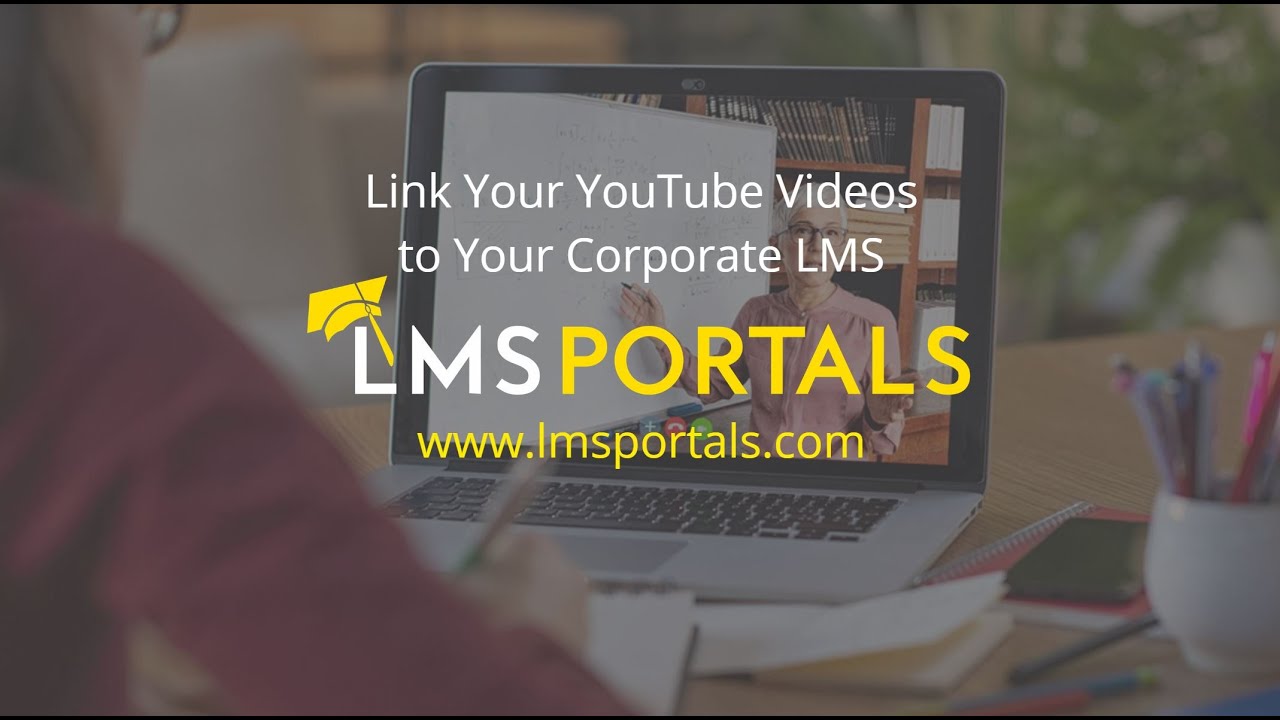Are you looking to enhance your courses by integrating engaging multimedia content? In this post, we'll explore how to easily insert YouTube videos into the Synergy Learning Management System (LMS). By adding videos, you can provide dynamic learning experiences for your students, making the material more relatable and easier to grasp. Let’s dive in and make your courses more interactive!
Understanding the Synergy LMS System

The Synergy LMS is a robust platform designed to facilitate learning and improve educational engagement. It provides educators with a suite of tools to create, manage, and deliver instructional content effectively. Here are some key features that make Synergy stand out:
- User-Friendly Interface: With its intuitive design, both instructors and students can navigate the system effortlessly, ensuring a smooth learning experience.
- Customization Options: Educators can tailor their courses to meet specific learning objectives, whether that's through varied assessments or personalized content delivery.
- Tracking and Analytics: The system allows teachers to monitor student progress, engagement levels, and overall performance, enabling data-driven decisions to support learners.
- Integration Capabilities: Synergy supports various integrations, allowing educators to incorporate external tools and resources, including multimedia content like YouTube videos.
In the context of multimedia, Synergy excels at supporting various file types and embedding content. This means that educators can enhance their lessons by adding visual elements that cater to different learning styles. Videos, in particular, serve as excellent tools for illustrating complex concepts and keeping students motivated.
When it comes to embedding YouTube videos, Synergy simplifies the process. Videos can serve various purposes, from providing supplementary information to demonstrating real-world applications of theoretical knowledge. Here’s why integrating YouTube videos into your courses is beneficial:
- Visual Learning: Many students retain information better when it’s presented visually. Videos break down complex topics into digestible segments.
- Engagement: An engaging video can capture students' attention more effectively than traditional text-based resources.
- Accessibility: YouTube videos are readily available, and there’s a vast library of educational content that can enrich your course material.
By understanding the flexibility and features of the Synergy LMS, educators can leverage these tools to create an enriching online learning environment. In the next sections, we'll cover the step-by-step process for embedding those engaging YouTube videos, ensuring that you can transform your courses into vibrant learning experiences!
Also Read This: Is There a Problem with YouTube TV Right Now? Live Updates
3. Benefits of Using YouTube Videos in Your LMS

Integrating YouTube videos into your Learning Management System (LMS) can significantly enhance the learning experience. Here are some compelling benefits:
- Engagement: Videos capture attention far better than text alone. They can make complex concepts easier to understand and keep learners interested.
- Visual Learning: Many people are visual learners. YouTube videos provide a way to illustrate ideas that might be difficult to convey with written content.
- Accessibility: YouTube is widely accessible. Most learners are familiar with the platform, making it easy for them to engage with content without additional training.
- Up-to-Date Content: The vast library of YouTube means you can find current, relevant information on a variety of topics, ensuring your learners receive the latest insights.
- Diverse Perspectives: YouTube offers a wealth of resources from different creators. This diversity allows learners to hear various viewpoints and approaches to a subject.
Incorporating videos can lead to higher retention rates. Studies show that people remember more from videos than from text. So, not only are you making your content more enjoyable, but you're also making it more effective!
Also Read This: How to Upload Video from iPhone to YouTube: A Simple Guide
4. Step-by-Step Guide to Inserting YouTube Videos

Ready to enrich your LMS with YouTube videos? Follow these simple steps to get started:
- Find Your Video: Go to YouTube and find the video you want to add. After selecting it, click on the Share button below the video.
- Copy the Link: In the sharing options, click on Copy to grab the video URL. This link is what you will use to embed the video in your LMS.
- Access Your LMS: Log into your Synergy LMS account. Navigate to the course or module where you want to add the video.
- Edit the Content: Click on Edit to modify the content area. This will usually open a text editor or content block.
- Insert the Video: Most LMS platforms have an option for adding media. Look for a button or icon that resembles a video or a media option. Click on it.
- Paste the Link: In the URL field, paste the YouTube link you copied earlier. If your LMS supports embedding, you might see an option to input the embed code instead.
- Adjust Settings: Many LMS systems allow you to customize how the video appears (size, autoplay, etc.). Adjust these settings as needed.
- Save Your Changes: Don’t forget to click Save or Publish to make the video available to your learners.
And voilà! You’ve successfully embedded a YouTube video into your LMS. Encourage your students to interact with the video, and consider adding discussion prompts or follow-up questions to enhance their learning experience.
Also Read This: How to Stream YouTube Shorts: Tips for Content Creators
5. Troubleshooting Common Issues
Incorporating YouTube videos into the Synergy LMS system can sometimes lead to a few hiccups. Don't worry; most issues are easily manageable. Let’s dive into some common problems and their solutions!
Issue 1: Video Not Displaying
If your video isn't showing up, first double-check the URL. Make sure you're using the correct link format from YouTube. The link should look something like this: https://www.youtube.com/watch?v=XXXXXXXXXXX.
Issue 2: Playback Errors
If students are encountering playback issues, ask them to check their internet connection. Sometimes, a slow connection can lead to buffering or failure to load. Additionally, updating the web browser can help resolve these playback errors.
Issue 3: Privacy Settings
If a video is set to private, it won’t play within Synergy LMS. Make sure the video’s privacy settings are adjusted to either “Public” or “Unlisted.” This is a crucial step to ensure everyone can access it without any headaches!
Issue 4: Embedding Restrictions
Some videos have embedding disabled by the uploader. If you encounter this problem, try to find an alternative video that allows embedding or contact the video owner to request permission.
Don’t forget, troubleshooting can sometimes be a collaborative effort! Encourage your learners to share their experiences and solutions with each other. This not only builds a community but can also help everyone navigate through technical challenges efficiently.
6. Best Practices for Engaging Video Content
Creating engaging video content is key to enhancing the learning experience in Synergy LMS. Here are some best practices to keep in mind:
- Keep It Short and Sweet: Aim for videos that are 5-10 minutes long. This duration helps maintain attention and focus. Break longer topics into a series of shorter videos if needed!
- Start with a Hook: Capture your audience’s interest in the first few seconds. A compelling question, a surprising fact, or a relatable scenario can draw viewers in instantly.
- Use Visuals Wisely: Incorporate graphics and animations to illustrate key points. Visual aids can enhance understanding and retention. Tools like Canva or Animaker can help you create eye-catching visuals.
- Include Clear Call-to-Actions: Encourage learners to engage with the content. This can be as simple as asking them to leave comments, take quizzes, or participate in discussions after watching the video.
Additionally, consider your audience. Tailor your content to their interests and needs. Asking for feedback after your videos can help you refine your approach and make adjustments for future content.
Lastly, always ensure that your videos are accessible. Adding captions not only helps those who are hearing impaired but also aids non-native speakers in understanding the material better. Tools like YouTube’s automatic captioning can be a starting point, but reviewing them for accuracy is essential!
 admin
admin








